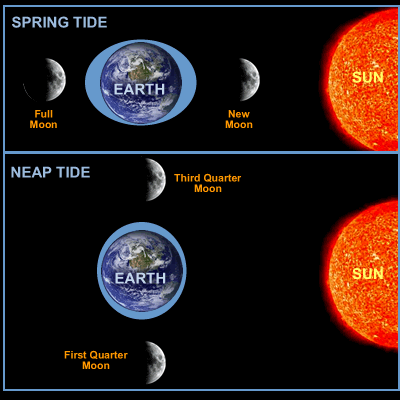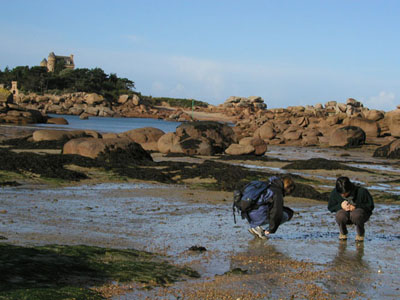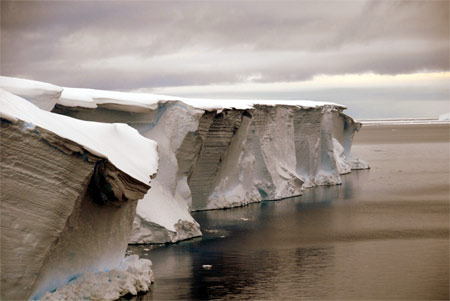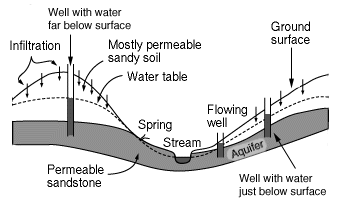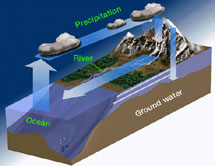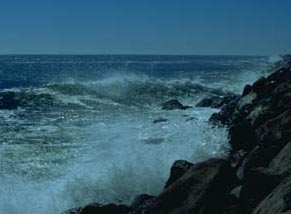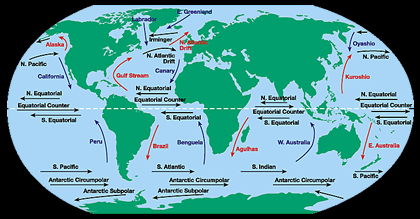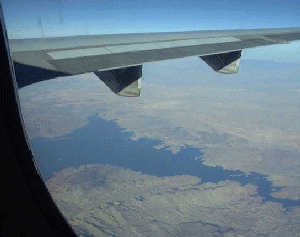Click on image for full size
Windows to the Universe / Lisa Gardiner
Tides of the Ocean
Each day the ocean surface rises and falls because of tides. The highest point of the rise is called high tide. The lowest point is called low tide. Most places have two high tides and two low tides each day.
Tides happen because of the gravitational pull of the Moon and Sun on ocean water. The Moon has a much greater impact on tides than the Sun because it is much closer. The Moon pulls water that is closest to it making a high tide on the side of the Earth closest to the Moon and there is a high tide on the opposite side of the Earth too. Low tides happen in places between the high tides. Because Earth is rotating, the tides change over time.
The difference between high tide and low tide is called the tidal range. The tidal range can be as little as a few centimeters to as much as several meters depending on the shape of the ocean floor. In Canada's Bay of Fundy the tidal range is very large – 16 meters.
The tidal range changes through the year as the location of the Moon and Sun in relation to Earth changes. At times when the Sun, Earth, and Moon are in line with each other (during full and new moons), the tidal range is larger because both the Sun’s and Moon's gravitational pull create the tide. This is called a spring tide. At times when the Moon and Sun are not in line with Earth, when they are at right angles when viewed from Earth, the tidal range is smaller. This is called a neap tide.
Tides are a powerful force. Scientists and engineers are looking for ways to use some of that power to make electricity. This can be done by channeling tidewater to flow through turbines that generate electricity. These systems may be a danger to wildlife, so scientists are studying tidal ecosystems to understand how they might be affected by turbines.


